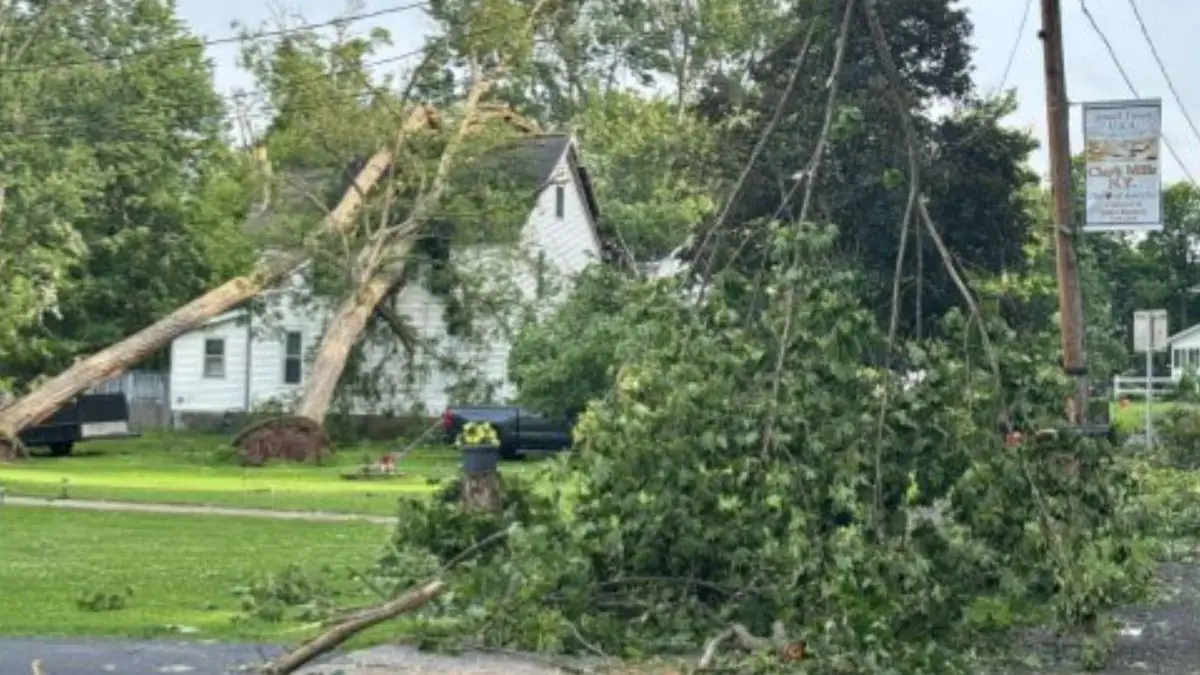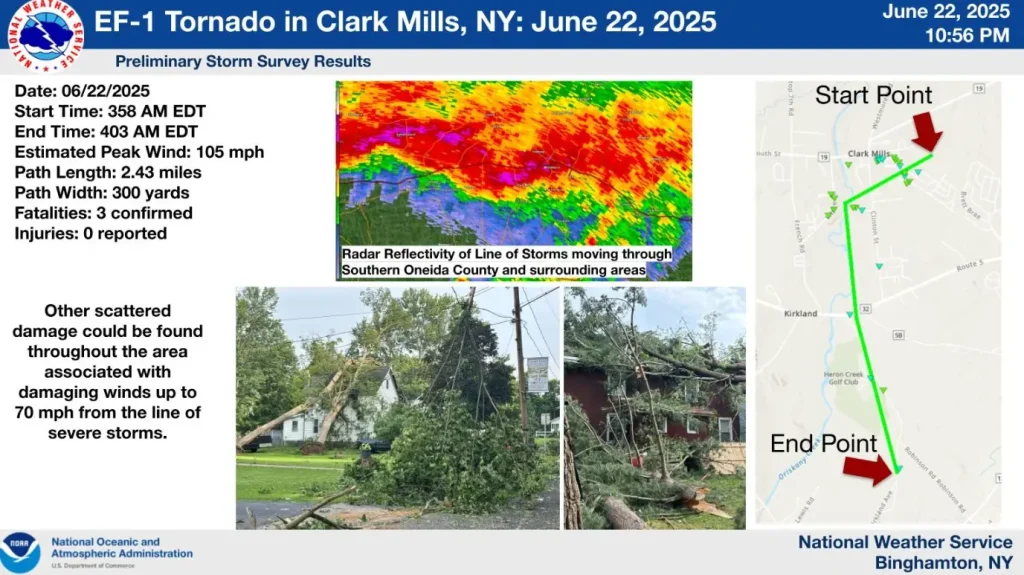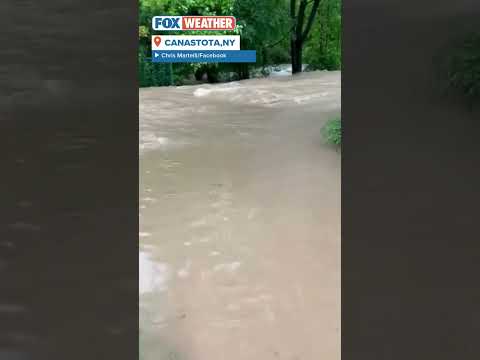EF-1 tornado kills 3, destroys historic grist mill and homes during rare Flash Flood Emergency in New York
A pre-dawn EF-1 tornado with peak winds of 170 km/h (105 mph) struck Oneida County, New York, at 03:58 LT on June 22, 2025, killing three people and causing extensive structural damage, including the destruction of a 19th century grist mill. Severe storms also triggered a rare Flash Flood Emergency in neighboring Chenango County, with widespread flooding and power outages reported across central New York.

EF-1 tornado damage in Clark Mills, New York on June 22, 2025. Credit: NWS Binghamton
A pre-dawn EF-1 tornado with estimated peak winds of 170 km/h (105 mph) struck Oneida County, New York, at 03:58 LT on June 22, resulting in three fatalities and extensive structural damage, according to the National Weather Service (NWS) in Binghamton.
The tornado’s path measured 3.9 km (2.43 miles) long and up to 275 m (300 yards) wide, beginning north-northeast of Clark Mills and ending north of Clinton.
The tornado rapidly intensified after forming along a kink in a line of severe thunderstorms. Numerous trees were uprooted or snapped, with several falling onto structures.
Three homes were severely damaged by fallen trees. Two residents lost their lives in one of the most heavily damaged structures, while a third fatality occurred at the collapsed end of a separate residence. No injuries were reported.

The tornado destroyed a 19th-century grist mill on Oriskany Creek, a local landmark with historical significance to the Clark Mills community, as it tracked southwest along Kirkland Avenue before dissipating and becoming embedded within the broader line of thunderstorms.
The severe weather system also brought intense rainfall across central New York, with 75–125 mm (3–5 inches) recorded in affected areas.
The National Weather Service in Binghamton issued a rare Flash Flood Emergency for Chenango County at 09:00 LT. Towns including Norwich, Sherburne, New Berlin, and Canastota experienced widespread flooding, with emergency services conducting multiple water rescues and at least 10 people trapped by rising floodwaters.
Damaging winds up to 115 km/h (70 mph) from the broader line of storms caused additional scattered tree and structural damage in the region. National Grid reported over 94 000 power outages in Oneida County, with more than 59 000 customers still without service by 17:00 LT.
Numerous roads and bridges became impassable due to flooding and debris. Local and state agencies, including Oneida County Emergency Services, the Town of Kirkland Department of Highways, the New York Office of Emergency Management, and Clark Mills Volunteer Fire Department, assisted with response and assessment.
Governor Kathy Hochul declared a state of emergency for 32 counties, including Oneida and Chenango, in response to both storm impacts and an expected extreme heatwave. The New York State Emergency Operations Center was placed on Enhanced Monitoring, and additional response assets were mobilized.
The storm system is part of a broader pattern of extreme weather affecting the northeastern United States, with increased atmospheric instability contributing to localized intense rainfall and convective storm activity. Authorities are continuing damage assessments and have urged residents to avoid flooded areas and downed power lines.
Tornadoes are relatively rare in New York State, with an average of about 10 events recorded each year. Most tornadoes that do occur are weak, rated EF-0 or EF-1, while strong tornadoes are extremely rare. Historical records indicate that between 1950 and 2023, approximately 450 tornadoes have been documented statewide, with fatalities remaining infrequent.
The majority of New York tornadoes result in limited damage and few, if any, casualties. Deadly tornadoes with significant structural impacts, such as the EF-1 event in Clark Mills on June 22, are highly unusual.
Reet is a science journalist and researcher with a keen focus on extreme weather, space phenomena, and climate-related issues. With a strong foundation in astronomy and a history of environmental activism, she approaches every story with a sharp scientific lens and a deep sense of purpose. Driven by a lifelong love for writing, and a curiosity about the universe, Reet brings urgency and insight to some of the most important scientific developments of our time.




Commenting rules and guidelines
We value the thoughts and opinions of our readers and welcome healthy discussions on our website. In order to maintain a respectful and positive community, we ask that all commenters follow these rules.